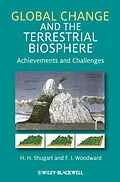Global climate change challenges ecologists to synthesize what we
know to solve a problem with deep historical roots in our
discipline. In ecology, the question, "How do
terrestrial ecosystems interact with the other earth systems to
produce planetary change?" has sufficient depth to be
the focal challenge. This central question is sharpened
further as the changes that we may be manifesting upon our
planet's systems of land, sea, air and ice can have potential
consequences for the future of human civilization.
This book provides the depth of the history of global ecology
and reviews the breadth of the ideas being studied today. Each
chapter starts with a brief narrative about a scientist whose work
traces forward into today's issues in global
ecosystems. The discussions are framed in a growing
realization that we may be altering the way our planet functions
almost before we have gained the necessary knowledge of how it
works at all.
Autorentext
H.H. ("Hank") Shugart is a systems ecologist who has developed and tested models of biogeochemical cycles, energy flow and secondary succession. He uses individual-based computer models to simulate changes in forest structure and composition over time and in response to environmental change.
Ian Woodward is a plant ecologist interested in the impacts of climate and changing carbon dioxide concentrations on plants and vegetation. His research on global climate change makes extensive uses of dynamic global vegetation models.
Zusammenfassung
Global climate change challenges ecologists to synthesize what we know to solve a problem with deep historical roots in our discipline. In ecology, the question, How do terrestrial ecosystems interact with the other earth systems to produce planetary change? has sufficient depth to be the focal challenge. This central question is sharpened further as the changes that we may be manifesting upon our planet's systems of land, sea, air and ice can have potential consequences for the future of human civilization.
This book provides the depth of the history of global ecology and reviews the breadth of the ideas being studied today. Each chapter starts with a brief narrative about a scientist whose work traces forward into today's issues in global ecosystems. The discussions are framed in a growing realization that we may be altering the way our planet functions almost before we have gained the necessary knowledge of how it works at all.
Inhalt
Preface.
1 Climatic change: ecology's big question.
1.1 Early environmental biogeography: from mapping plant species
distributions to mapping vegetation.
1.2 Global distributions of vegetation.
1.3 Formation or biome interactions with climate.
1.4 Concluding comments.
References and notes.
2 The kaleidoscope of past vegetation patterns.
2.1 Vegetation in past climates: Quaternary palaeoecology.
2.2 Challenges for environmental change studies from Quaternary
palaeoecology.
2.3 Concluding comments.
References and notes.
3 The complication of time and space scales.
3.1 The ecosystem concept and scale.
3.2 Scale and the global dynamics of carbon.
3.3 Formulation of ecological models.
3.4 Interactive mosaic models.
3.5 Concluding comments.
References and notes.
4 Meeting the climate change challenge.
4.1 Historical roots of the 'greenhouse warming' concept.
4.2 Climate and vegetation: the challenge of prediction.
4.3 What is the signifi cance of global climate change on
Earth's vegetation?
4.4 Mosaic landscape models.
4.5 Homogeneous landscape models and climate change.
4.6 Interactive global mosaic models.
4.7 Concluding comments.
References and notes.
5 Dynamic vegetation modelling using individual-based
models.
5.1 Gap models: structure and model development.
5.2 History of gap model development.
5.3 Global climate change assessment applications of gap
models.
5.4 Theoretical implications for global change ecology from gap
models.
5.5 Concluding comments.
References and notes.
6 Vegetation futures and the rise of dynamic global
vegetation models.
6.1 Including the effects of land surface attributes and
dynamics in climate models.
6.2 Dynamic global vegetation models.
6.3 The development of dynamic global vegetation models.
6.4 Investigating differences in dynamic global vegetation model
simulations.
6.5 Vegetation feedbacks on climate.
6.6 Observations of recent vegetation change.
6.7 Concluding comments.
References and notes.
7 Climate-changed futures - how different will they
be?
7.1 The future view from the Intergovernmental Panel on Climate
Change.
7.2 Carrying on from where the world was before now.
7.3 Carrying on from where the world is now.
7.4 Future realizations.
7.5 Concluding considerations.
References and notes.
8 Climate change and global plant diversity.
8.1 Making future predictions of diversity.
8.2 Getting at the mechanisms that control species
diversity.
8.3 Simulating the impact of changing climate and CO2 on future
diversity.
8.4 The naturalization of invasive species.
8.5 Concluding remarks.
References and notes.
9 Epilogue.
References and notes.
Index.
